Principles of Animation Physics: Part 4
You’re probably familiar with the twelve Principles of Animation from The Illusion of Life by Johnston and Thomas. In this series of articles on Animator Island I’ve been telling you about the six Principles of Animation Physics:
- Timing, Spacing, and Scale
- Law of Inertia
- Momentum and Force
- Center of Gravity
- Weight Gain and Loss
- Action-Reaction
In this article we’ll let talk about:
Principle #4: Center of Gravitythe center of the average mass distribution. This point needs to be above a base of support of a character to keep the b... More
The center of gravitythe center of the average mass distribution. This point needs to be above a base of support of a character to keep the b... More is the average location of an object’s weight. This is the geometric (visual) center for most objects but for non-uniform objects (e.g., hammer with a wooden handle and an iron head) it’s located closer to the heavier side. A person’s center of gravitythe center of the average mass distribution. This point needs to be above a base of support of a character to keep the b... More is roughly located in the center of the torso, at about the height of the belly button, but it can shift depending on the pose. The location of a character’s center of gravitythe center of the average mass distribution. This point needs to be above a base of support of a character to keep the b... More in various poses is illustrated below.
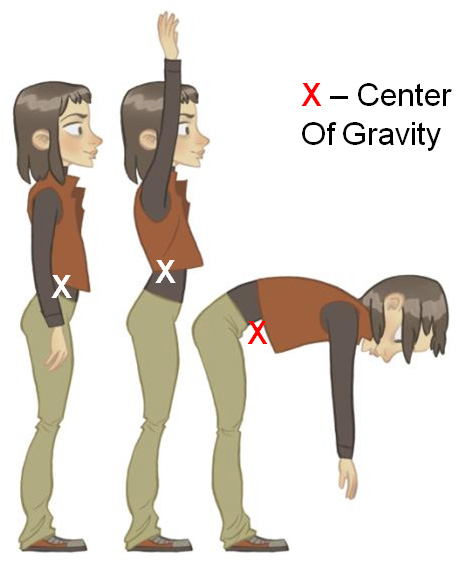
The center of gravitythe center of the average mass distribution. This point needs to be above a base of support of a character to keep the b... More is important for various reasons.
First, a character is in a balanced stationary pose only if the center of gravitythe center of the average mass distribution. This point needs to be above a base of support of a character to keep the b... More is positioned over the area around the character’s feet, which is called the base of support. The size and shape of the base of support will vary depending on how the feet are positioned, as illustrated below. It’s harder for a character to stay in balance if the feet are close together since the base of support is quite small; if a character stands on one leg then the base of support is just the area where the foot touches the ground.
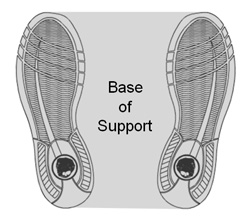
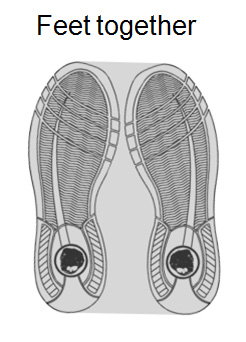
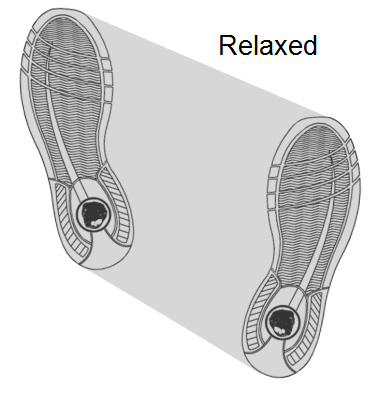
To check if a character’s center of gravitythe center of the average mass distribution. This point needs to be above a base of support of a character to keep the b... More is located over its base of support it’s helpful to draw the line of gravity, the vertical line passing through the center of gravitythe center of the average mass distribution. This point needs to be above a base of support of a character to keep the b... More, and the center of pressure, which is where the line of gravity hits the floor, as illustrated below. If the center of pressure falls inside the base of support then the character is in static balance.
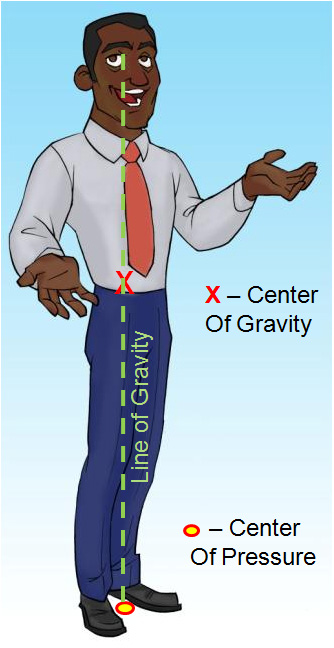
Let’s see how this applies in some examples: A character standing on one foot, as in the photo below, may have to position their arms and legs to bring the center of gravitythe center of the average mass distribution. This point needs to be above a base of support of a character to keep the b... More over the small base of support.

A character has to lean forward when carrying a heavy weight, such as the backpacker illustrated below, to keep the combined center of gravitythe center of the average mass distribution. This point needs to be above a base of support of a character to keep the b... More above the base of support.
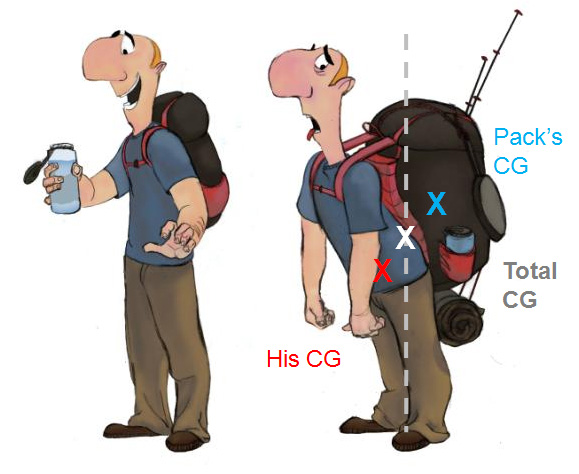
Notice the difference in the poses illustrated below for characters lifting a light beach ball and heavy water bottle. The character lifting the heavy object has to keep it close to her body to position the combined center of gravitythe center of the average mass distribution. This point needs to be above a base of support of a character to keep the b... More over her feet. If she lifts it quickly (accelerating it upward) then it’s even harder for her to stay in balance since the object effectively has greater weight (as we’ll see in Principle #5: Weight Gain and Loss), which shifts the combined center of gravitythe center of the average mass distribution. This point needs to be above a base of support of a character to keep the b... More.
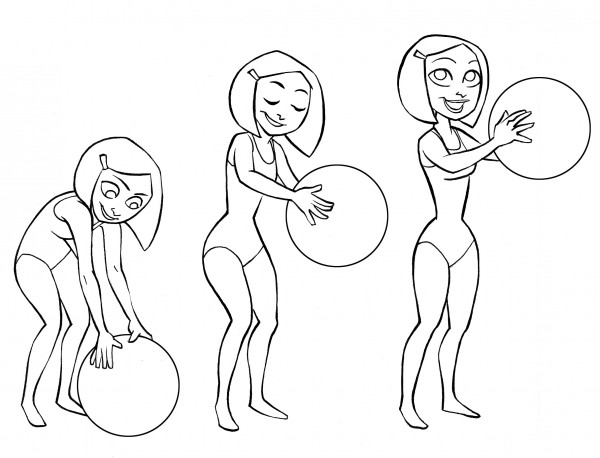
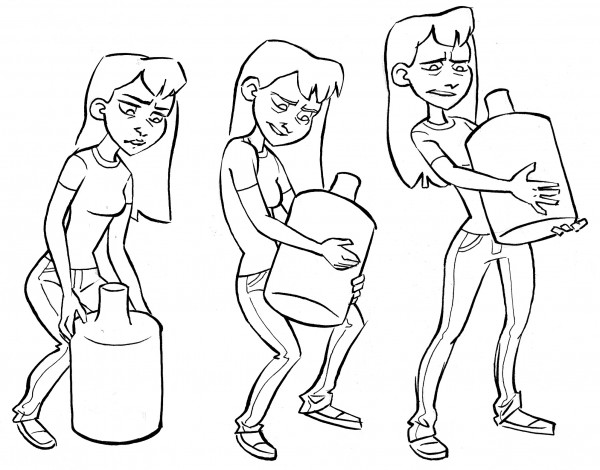
But how do we know that the first woman doesn’t have super-human strength and is actually carrying a heavy metal ball? Because, regardless of her strength, if the ball were actually very heavy then the combined center of gravitythe center of the average mass distribution. This point needs to be above a base of support of a character to keep the b... More would be in front of her, outside her base of support, and she would tip over.
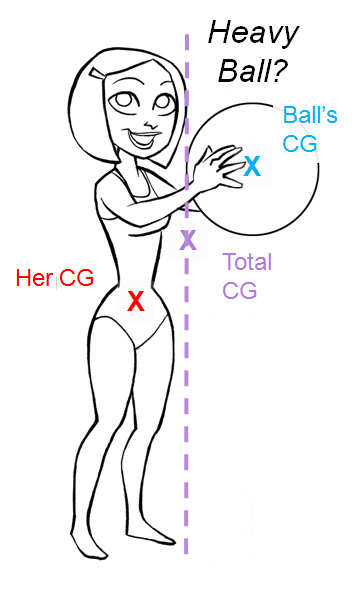
The center of gravitythe center of the average mass distribution. This point needs to be above a base of support of a character to keep the b... More is also important because it determines weight shift. Specifically, when a character changes pose the center of gravitythe center of the average mass distribution. This point needs to be above a base of support of a character to keep the b... More shifts, causing a weight shift from one leg to another. In the photos below I’m standing on a pair of scales that measure how much weight is on each foot. Simply shifting the center of gravitythe center of the average mass distribution. This point needs to be above a base of support of a character to keep the b... More by a few inches to one side is enough to cause significantly weight shift.

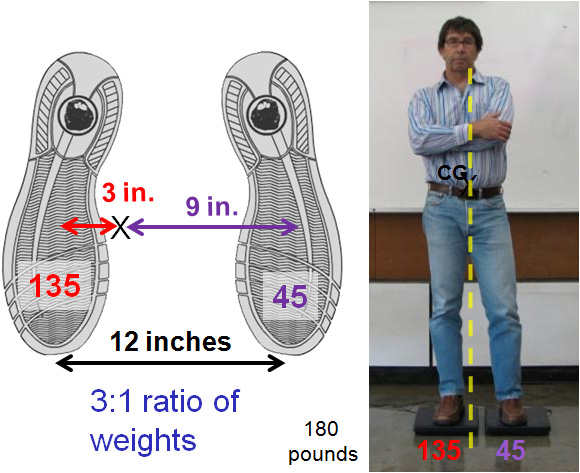
Weight shifts from foot to foot are reflected in the pose, typically raising the hip and lowering the shoulder on the weight-bearing side (an effect known as “contrapposto”). When animated well it should be clear whether a character is standing or sitting even if it’s a medium shot that’s framed from the waist up.
Finally, when we consider the path of action of a moving character the point that we’re most interested in tracking is the center of gravitythe center of the average mass distribution. This point needs to be above a base of support of a character to keep the b... More. For example, when a character jumps in the air the center of gravitythe center of the average mass distribution. This point needs to be above a base of support of a character to keep the b... More follows a parabolic arc, independent of any rotation of the torso or flailing of the arms and legs. The sequence of photos below illustrate this by tracking the position of the center of gravitythe center of the average mass distribution. This point needs to be above a base of support of a character to keep the b... More of a spinning hammer as it flies through the air.

The motion of the center of gravitythe center of the average mass distribution. This point needs to be above a base of support of a character to keep the b... More is also important in walks, but to understand why we’ll have to discuss Principle #5, Weight Gain and Loss. Look for that article appearing in the near future here on Animator Island. See you then!







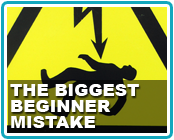
Oh these articles are cool!!! where do I find the two last ones?
thank you for making me laugh with the photo